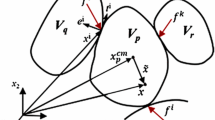Abstract
The stress relaxation in golf balls follows the logarithmic law, based on which a logarithmic impact model was developed. The model allows the conversion of the stiffness measured at different deflection rates into the velocity-independent elasticity parameter, as well as the calculation of impact forces. The stiffness and the viscosity parameter were derived from compression and stress relaxation tests respectively. The softer, or less stiff, a ball is, the smaller is its viscosity constant. Wound balls are generally less viscous than solid core balls. The impact forces calculated from the model were compared to forces measured in impact tests at approximately 10 m/s. The logarithmic visco-elastic model predicts peak impact forces accurately. However, the measured impact forces were partially inconsistent with a high standard deviation. As a recommendation, golf balls should be graded with two compression numbers (instead of the conventional Atti or Riehle numbers), or with the gradient of the mean stiffness, in addition to the conventional compression numbers.
Preview
Unable to display preview. Download preview PDF.
Similar content being viewed by others
6-References
Cochran A. J. Development and use of one-dimensional models of a golf ball. Journal of Sports Sciences, 20: 635–641, 2002.
Fuss F. K. Non-Linear Viscoelastic Properties of Golf Balls. In: The Impact of Technology on Sport II, Eds: Fuss F. K., Subic A., Ujihashi S., Taylor and Francis Group, London, pp. 207–222, 2007.
Lieberman B. B. and Johnson S. H. An analytical model for ball barrier impact. Part 1: models for normal impact. In: Cochran A. J. and Farrally M. R. (Eds.) Science and Golf II. Spon, London, pp 309–314, 1994.
Piessens R. and Huysmans R. Algorithm 619: Automatic numerical inversion of the Laplace transform. ACM Trans. Math. Softw., 10(3): 348–353, 1984.
Ujihashi S. Measurement of dynamic characteristics of golf balls and identification of their mechanical models. In: Cochran A.J. and Farrally M.R. (Eds.) Science and Golf II. Spon, London, pp 302–308, 1994.
Author information
Authors and Affiliations
Rights and permissions
Copyright information
© 2008 Springer-Verlag France, Paris
About this paper
Cite this paper
Fuss, F.K. (2008). Logarithmic Visco-elastic Impact Modelling of Golf Balls (P147). In: The Engineering of Sport 7. Springer, Paris. https://doi.org/10.1007/978-2-287-09413-2_6
Download citation
DOI: https://doi.org/10.1007/978-2-287-09413-2_6
Publisher Name: Springer, Paris
Print ISBN: 978-2-287-09412-5
Online ISBN: 978-2-287-09413-2
eBook Packages: EngineeringEngineering (R0)




